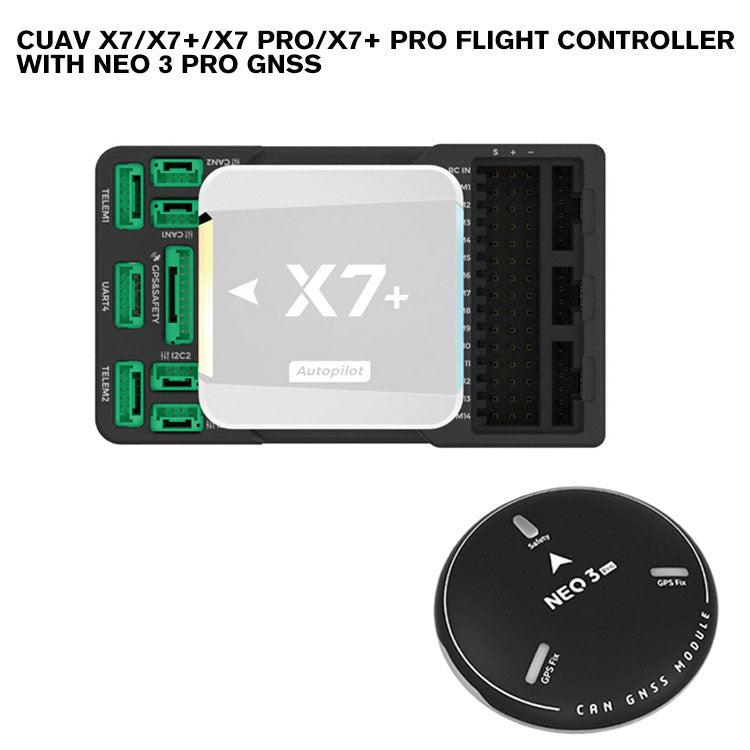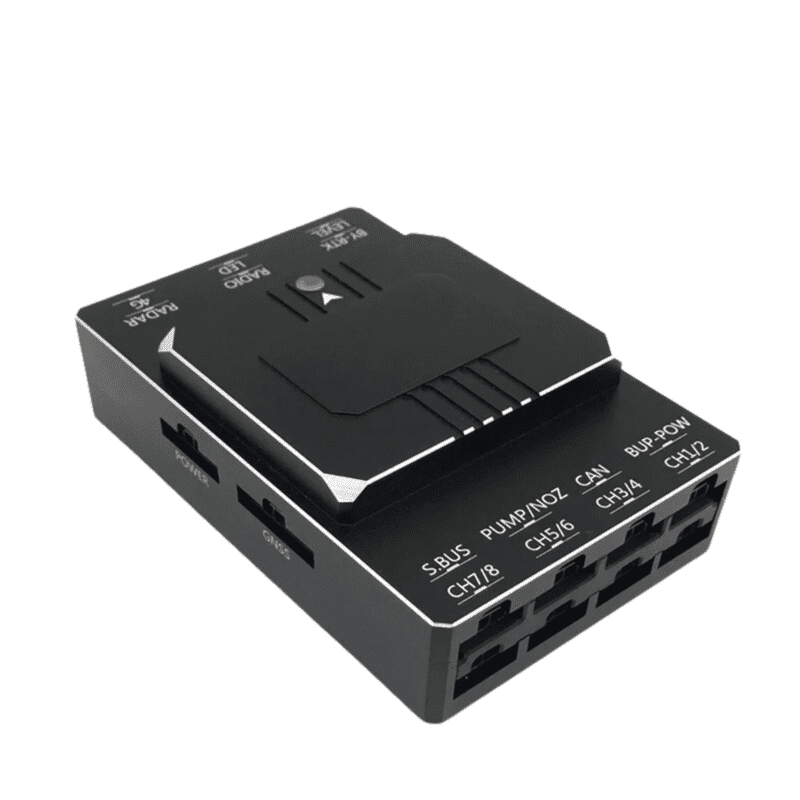Unparalleled Precision: SparkNavi Drone Flight Controller and GNSS/INS Made in Taiwan
Unparalleled Precision: SparkNavi Drone Flight Controller and GNSS/INS Made in Taiwan
Blog Article
Exploring the Duty of Drone Trip Controllers in Enhancing Flight Security and Navigation Performance
The improvement of drone technology has significantly increased the relevance of flight controllers, which offer as the mind of these aerial automobiles. By incorporating real-time information from a selection of sensing units, trip controllers boost trip stability and navigation efficiency, ensuring that drones can operate efficiently also in intricate atmospheres.

Comprehending Trip Controllers
Flight controllers are indispensable components in the functioning of drones, serving as the brains that handle and support trip procedures. These sophisticated devices process data from various sensors, consisting of accelerometers, gyroscopes, and GPS, to make certain that the drone maintains its intended flight course. The trip controller analyzes this information and implements commands based upon pre-defined formulas, making it possible for the drone to react to ecological changes, such as wind or obstacles.
The primary function of a trip controller is to keep security throughout trip. It achieves this by making real-time adjustments to the drone's electric motors and control surface areas, making sure equilibrium and control. Additionally, contemporary flight controllers incorporate advanced attributes such as waypoint navigating, permitting automated trip courses and boosted functional effectiveness.
Understanding the architecture of trip controllers is essential for both professionals and enthusiasts. They normally consist of a microcontroller, firmware, and various user interfaces for sensing unit input and interaction. As innovation advances, trip controllers have become extra qualified and compact, incorporating expert system to adjust and boost decision-making procedures to complex flight scenarios. This development indicates a crucial development in the drone market, leading the way for more advanced applications and safer operations.
Trick Components of Flight Security
Achieving optimum trip stability in drones counts on several essential parts that operate in performance to ensure regulated and smooth procedures. Central to this stability is the flight controller itself, which processes information from numerous sensors to preserve the preferred trip perspective. This includes accelerometers and gyroscopes that determine activity and orientation, enabling real-time modifications to the drone's setting.
An additional vital part is the electronic speed controllers (ESCs), which control the power provided to the electric motors. By carefully adjusting electric motor rates in response to flight controller commands, ESCs help preserve balance and combat disturbances created by wind or abrupt movements.
Additionally, the design of the drone's framework plays a pivotal duty in flight stability. A well-structured framework lessens resonances and enhances the total wind resistant account, adding to smoother flight characteristics. The combination of innovative formulas within the flight controller aids in predictive changes, making sure a responsive and versatile flight experience.
Together, these parts form a natural system that enhances a drone's security, permitting specific handling and boosted efficiency in various flight problems.
Navigating Performance Techniques
Efficiency in navigation is necessary for enhancing drone procedures, particularly in intricate settings. Effective navigating techniques improve the capacity of drones to pass through difficult surfaces and stay clear of obstacles, consequently boosting operational effectiveness and security.
One prominent method is the application of advanced GPS and inertial dimension devices (IMUs) that give accurate area tracking and positioning information. These technologies enable drones to calculate ideal trip paths in real-time, taking right into account various variables such as wind problems and potential obstacles.
One more strategy involves using formulas for path preparation and optimization. Formulas such as A * and Dijkstra's algorithm can be released to identify one of the most reliable path while minimizing energy intake and trip time. In addition, incorporating artificial intelligence designs can make it possible for drones to adaptively gain from their atmospheres, improving navigation abilities via experience.

Effect On Autonomous Drones
The combination of sophisticated navigating methods has greatly changed the capacities of autonomous drones, enabling them to operate with greater autonomy and precision. SparkNavi drone flight controller and GNSS/INS made in Going Here taiwan. These enhancements are mainly credited to advanced flight controllers that use real-time data handling and sensing unit blend, permitting drones to browse complicated atmospheres effortlessly
The influence on self-governing drones extends beyond mere navigation; it incorporates improved barrier avoidance, enhanced security during dynamic problems, and increased goal integrity. By leveraging formulas that include artificial intelligence and man-made intelligence, drones can adapt to changing conditions, making notified choices that maximize their trip paths while reducing risks.
Additionally, the execution of robust flight controllers has actually assisted in the execution of complex jobs, such as airborne inspections, distribution services, and agricultural tracking, with very little human intervention. This capacity not only streamlines procedures however also lowers human error, therefore improving overall safety.
Therefore, the operational scope of autonomous drones has expanded substantially, making them important tools in numerous markets. Their capability to do successfully in diverse scenarios emphasizes the critical duty that advanced trip controllers play fit the future of this link unmanned airborne systems.
Future Trends in Flight Control
Regularly, advancements in trip control technology are positioned to redefine the landscape of drone procedures in the coming years. Emerging fads indicate a considerable shift in the direction of enhanced man-made knowledge (AI) integration, allowing trip controllers to process real-time information a lot more successfully. This evolution will promote improved decision-making capabilities, enabling drones to adapt to vibrant environmental conditions autonomously.
Furthermore, the application of artificial intelligence formulas is anticipated to boost predictive upkeep, thereby lessening downtime and expanding the lifecycle of drone parts. This proactive method to maintenance will be essential as drone applications expand across numerous industries, from agriculture to logistics.

.jpg)
Last but not least, advancements in protected communication protocols will deal with safety and security and regulatory concerns, guaranteeing that drones can operate effortlessly in congested airspaces (SparkNavi drone flight controller and GNSS/INS made in taiwan). Collectively, these patterns direct in the direction of a future where trip control systems are not just smarter and a lot more also qualified however reliable of running safely in an increasingly incorporated airspace
Conclusion
In conclusion, drone flight controllers are essential to boosting trip stability and navigating performance through the advanced processing of sensing unit information. By maintaining ideal trip perspectives and employing sophisticated formulas for course optimization and obstacle avoidance, these controllers dramatically contribute to the autonomy and operational security of drones. As innovation proceeds to develop, additionally innovations in trip control systems are anticipated, promising improved performance and broadened abilities in the realm of unmanned aerial vehicles.
By integrating real-time data from a range of sensors, flight controllers improve trip security and navigating effectiveness, making certain that drones can run efficiently also in intricate environments.Trip controllers are essential parts in the performance of drones, serving as the minds that stabilize and take care of flight operations. In addition, modern-day flight controllers incorporate innovative functions such as waypoint navigating, permitting for automated trip paths and improved operational performance.
Central to this stability is the flight controller itself, which processes information from different sensing units to preserve the preferred flight mindset.In final thought, drone flight controllers are essential to improving flight security and navigating effectiveness through the sophisticated handling of sensing unit information.
Report this page